The state of Colorado features diverse wildlife, which includes four species of fox. Visitors and residents may have the opportunity to spot red foxes, gray foxes, swift foxes, or kit foxes. These foxes have unique traits that enable them to survive and thrive in different habitats. In this article, we explore the different types of foxes that inhabit Colorado. We cover their distinct physical and behavioral characteristics, along with where to spot them in the wild.
Red Fox
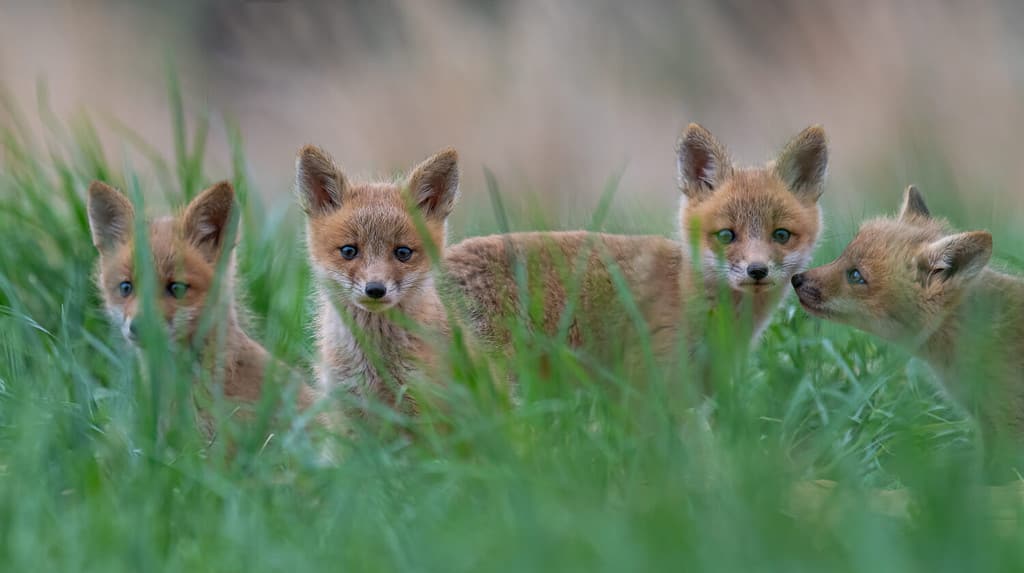
Red foxes are primarily active during the nighttime and have solitary lifestyles.
©Randy G. Lubischer/Shutterstock.com
The red fox, scientifically known as Vulpes vulpes, is widely distributed in Colorado and belongs to the Carnivora order. These foxes have distinctive reddish-orange fur and a long fluffy tail with a white-tipped end. They also have adorable black ears and legs. They are well-known for their adaptability and slyness. Their omnivorous diet includes fruits, insects, small mammals, and birds.
Red foxes are primarily active during the nighttime and have solitary lifestyles. They communicate with their unique vocalizations that consist of howls, barks, and screams. Urban areas, suburbs, forests, and grasslands are their preferred habitats, where there are ample cover and hiding places.
Gray Fox
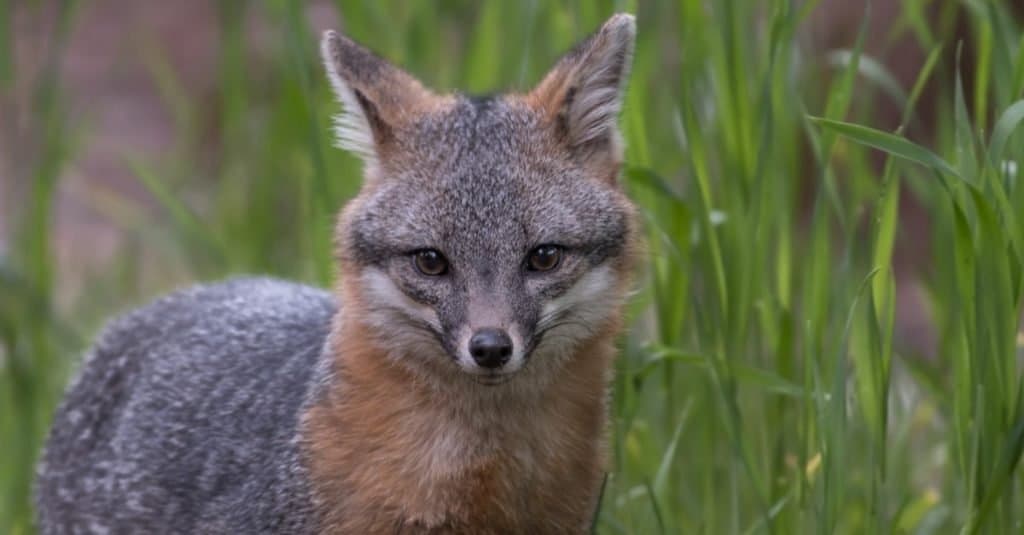
Gray foxes have an omnivorous diet that includes rodents, insects, fruits, and berries.
©Hayley Crews/Shutterstock.com
The gray fox, scientifically known as Urocyon cinereoargenteus, is a species of fox that inhabits Colorado. They have a unique gray and reddish-brown head, back, and tail, while their legs and belly are tan. One of their distinguishing traits is their ability to climb trees. They use their hooked claws to move up and down tree trunks with ease.
Gray foxes have an omnivorous diet that includes rodents, insects, fruits, and berries. They are active during the night and have a solitary lifestyle. Their communication mainly involves barks and growls. Gray foxes prefer wooded and brushy areas as their habitat throughout the state.
Swift Fox
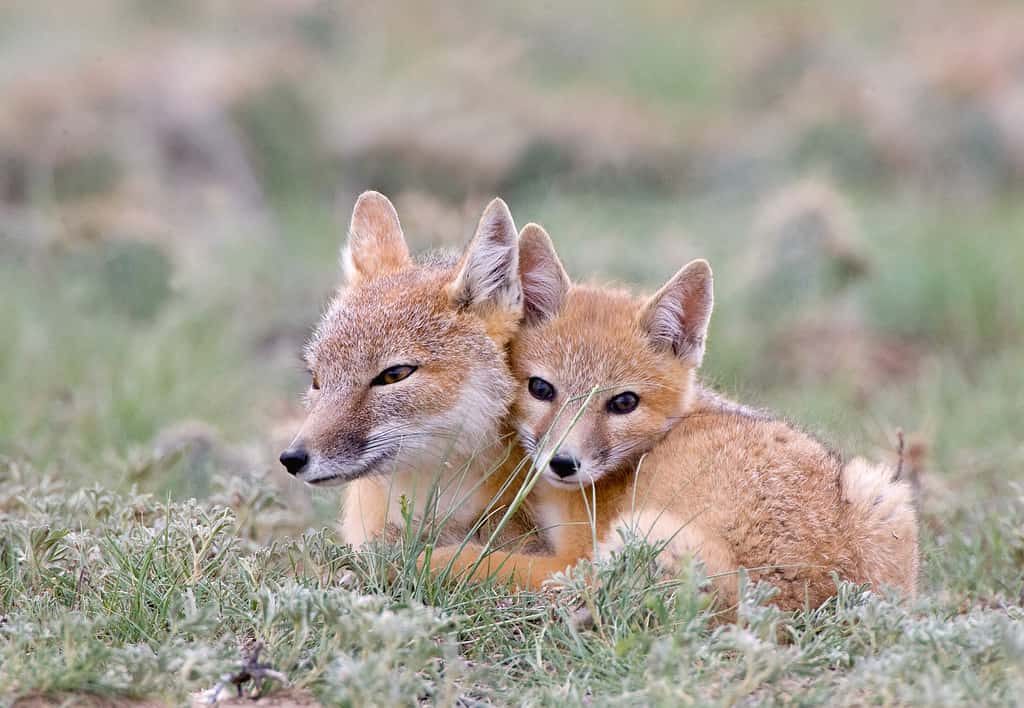
Swift foxes have a notable appearance, featuring a slender body, long bushy tail, and reddish-brown fur.
©Rob Palmer Photography/Shutterstock.com
The swift fox, or Vulpes velox, is a small fox species. They have a notable appearance, featuring a slender body, long bushy tail, and reddish-brown backs and sides, with white undersides. Swift foxes have the capacity to run at speeds up to 40 miles per hour.
Nocturnal and solitary in nature, they primarily feed on small mammals, birds, insects, and fruits. In Colorado, the Great Plains host the largest population of swift foxes, with scattered populations in other regions. Their preferred habitat is grasslands and prairies, where they dwell in burrows.
Kit Fox
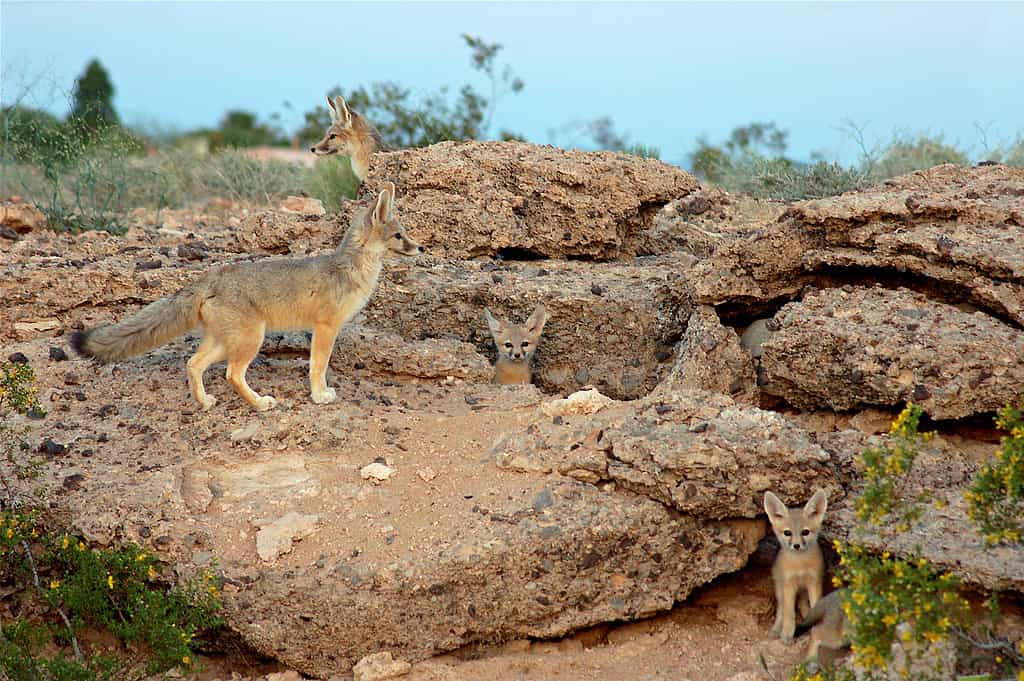
Kit foxes are solitary and nocturnal animals, inhabiting desert areas or shrublands.
©iStock.com/Sherri Cassel
The kit fox, scientifically known as Vulpes macrotis, is a small species of fox residing in Colorado. They have sandy to gray-brown fur, bushy tail, and distinctive, large ears, which aid in temperature regulation and hearing. Kit foxes are skilled hunters and primarily eat small mammals, insects, and fruits. They are solitary and nocturnal animals, inhabiting desert areas or shrublands in Western and Southern Colorado. Some reside in urban or agricultural areas. However, their conservation status is currently a concern due to habitat loss and human activities.
Fun Fox Facts!
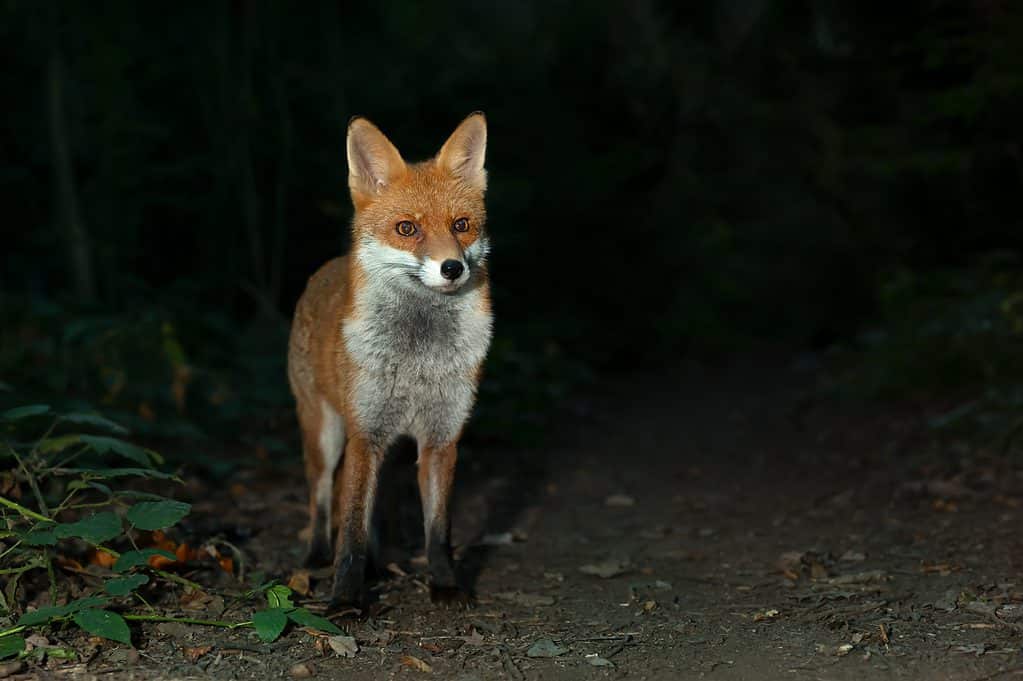
Within Colorado, red foxes primarily live in Denver.
©Giedriius/Shutterstock.com
- The red and gray foxes primarily reside in the Denver area.
- the red fox species possesses transitional features between the northern foxes and other smaller fox species, as their skulls contain more primitive, neotenous traits than other species.
- The kit fox is a fox species that inhabits arid and semi-arid regions of North America and was on the Endangered Species List for almost 50 years but was recently removed after a successful conservation effort.
- Foxes are important predators for regulating small mammal populations in grassland ecosystems.
In Conclusion
As you can see, Colorado is known to be home to four diverse species of fox, namely the red fox, the gray fox, the swift fox, and the kit fox. While these species share some characteristics, such as their love for nocturnal and solitary lifestyle and their role as critical regulators of populations in grassland ecosystems, they also have many differences. For instance, the swift fox is the smallest North American fox and can run at impressive speeds, whereas the kit fox features large ears that help with temperature regulation and hearing.
Due to human activities and loss of habitat, fox populations face significant dangers, emphasizing the need for conservation efforts to protect these fascinating creatures for future generations.
The photo featured at the top of this post is © Ondrej Prosicky/Shutterstock.com
Thank you for reading! Have some feedback for us? Contact the AZ Animals editorial team.







